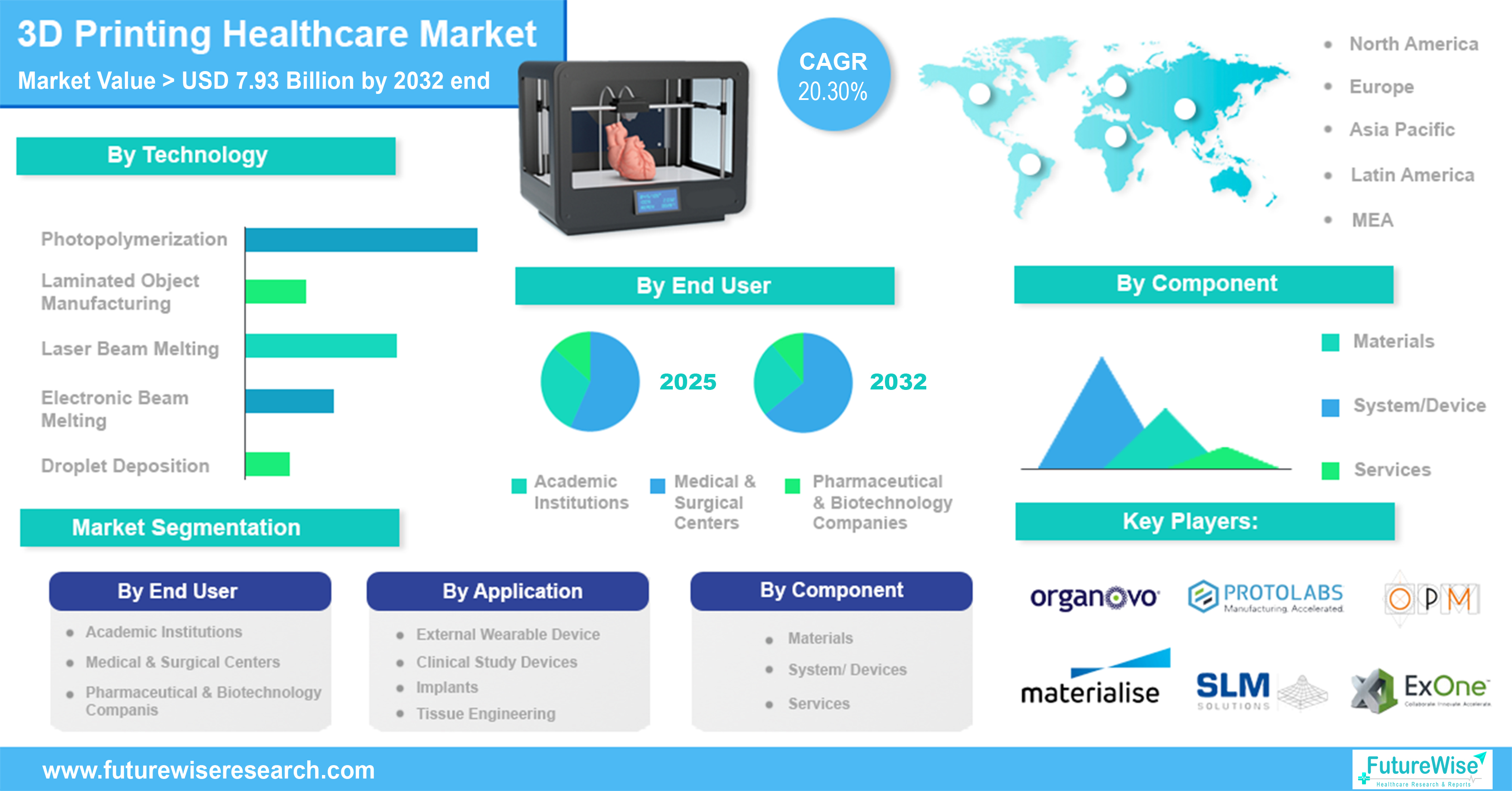According to FutureWise analysis the 3D printing healthcare market in 2023 was US$ 1.81 billion, and is expected to be over US$ 7.93 billion by 2032 with a CAGR of 20.30%. Advancements in bioprinting, custom prosthetics, and patient-specific surgical models are enhancing the use of 3D printing in healthcare. The demand for personalized treatments and quicker, cost-effective production of medical devices is fueling market growth. Innovations in 3D-printed implants, dental devices, and wearable technologies are set to significantly impact the future of healthcare.
3D printing is a process that involves additive manufacturing technique that creates three-dimensional objects by building successive layers of raw materials such as plastics, metals, and ceramics. The process typically starts with medical imaging techniques, such as MRI scans or CT scans, to capture detailed anatomical data of a patient. This data is then processed using specialized software to generate a three-dimensional digital model. The digital model is further refined, optimized, and prepared for 3D printing. Once the design is finalized, the printer builds the object layer by layer, using the specified materials. Post-processing steps may be involved to clean, polish, or sterilize the printed objects, depending on their application.

There is a growing R&D crisis occurring in the pharmaceutical industry, as drugs are failing at later and later stages. Bioprinted tissues and organs are already being used to help increase the success rate of clinical trials. With bioprinting, researchers can print fully functional organs made of human cells to test a drug’s efficacy before using in vivo animal or human tests. This reduces the damage caused to animals and expedites the entire R&D process. 3D printing of models affords further insights into pathological changes and visualization of patient-specific organ anatomy. The education and surgical planning fields are two of the heaviest investors in 3D printing for the healthcare industry. Leveraging additive manufacturing as a pre-operative planning tool has shown extremely promising results.
FutureWise Market Research has published a report that provides an insightful analysis of 3D Printing Healthcare Market trends that are affecting the overall market growth. This report will provide a detailed analysis of market share, regional insights, and competitor analysis that includes the stature of key manufacturers operational in this industry. According to the analysis conducted by FutureWise research analysts, the 3D Printing Healthcare Market is estimated to register a considerable growth rate over the forecast period. This report lists the market segments and potential prospects available across this industry, in addition to providing crucial information on the total valuation currently held by the industry. Moreover, this report will assist key management individuals in an organisation to enhance their decisions pertaining to business expansion as well as strategic changes for increasing customer base.